Complaints of poor or inadequate interior finishes are common when customers receive their products and can have a detrimental effect on your company’s reputation and sales.
To make sure that you get the best results that match what your client wants, use 3D exterior and interior rendering. You can even go for an architectural walkthrough if you truly want to wow your clients.
In this article, we’ll be covering the best interior finishes to help you avoid that situation.
Table of Contents
Introduction: What Are Interior Finishes?
Interior finishes are used in the last stages of the manufacturing or construction process. They form the final surface of any element. The purpose is to protect this element from corrosion, water, abrasion, frost or impact, and/or be decorative.
Some elements are self-finished. That is, the surface is part of the material that the element is made from.
The term “finishes” tends to refer to internal surfaces, but finishes can also be applied to external elements. However, in this article, we will be focusing on interior finishes.
These can be applied dry or wet. Application might involve layering. For example, a primer or undercoat might be applied to a wall before the final coating of paint.
The NBS categorizes finishes as decorative fabrics/papers, resin flooring, insulation with rendered finish, stone/concrete/ceramic/quarry tiling or mosaic, plastic/rubber/lino/cork/carpet sheeting or tiling, and edge fixed carpeting, among other things.
It is important to note, however, that there is some overlap in this categorization with various other building components. Furthermore, other classifications may put some of these items in other categories. As an example, stone may be considered a part of the floor construction, and plaster may be considered a lining, not a finish.
Regardless, an accurate translation of the designer’s intention in your interior construction drawings is critical for good finishes.
Which Factors Influence Interior Finish Choice?
When it comes to interior design, your choices in finishes aren’t necessarily easy to pick. Some of the most common influencing factors are:
- Durability
- Corrosion and weather resistance
- Expected life
- Cleaning and other maintenance requirements
- Appearance (gloss, silk, matte, etc.)
- Color
- Safety
- Ease of application
- Availability
- Cost
- Environmental impact
Top Choices For Interior Finishes
1. Paint Finishes
When it comes to interior paint finishes, the finish is as important as the color, but this is an element that tends to get overlooked, even in hospitality projects. A high gloss wall paint will give you a totally different effect from an eggshell finish.
Paint finishes are available in oil-based (alkyd) and latex paints. Most people prefer latex paints because they are easier to clean and don’t give off the same levels of unpleasant fumes as oil-based paints.
Do note that some paint manufacturers may use different terminology for the same finish. For example, they may refer to a “glossy” finish as “high-gloss”.
Types of paint finishes:
- Eggshell finish: As the name suggests, this paint finish has a low sheen similar to that of an eggshell. The eggshell finish works well in low-traffic areas that are less susceptible to dirt build-up. It cleans better than flat enamel or flat paint, though it is still relatively hard to clean. Eggshell finishes are popular in family homes, since they help to hide flaws in walls.
- Flat finish: This finish has a fully matte surface and a somewhat chalky feel. It is useful if you want to cover up cracks, bumps or other blemishes, and is often used for interior walls and ceilings. However, flat finishes are difficult to clean, so you might want to avoid them if you have children or pets.
- Flat enamel finish: Good for guest bedrooms and powder rooms. Flat enamel has a matte finish, but it forms a bit of a film as it dries. It also holds up nicely to cleaning on occasion.
- Semi-gloss finish: Semi-gloss is often used on kitchen cabinets, bathroom cabinets, trim, and doors. It is easy to clean, and has a subtle shine. Due to its high durability, it can be used both outdoors and indoors.
- Satin finish: This is a somewhat glossy finish, with a smooth look. Often it is used for trim, ceilings, doors and windows, but it can be used on walls as well. Use it in areas that get more traffic, or in kitchens, family rooms, children’s rooms, or bathrooms.
- High-gloss finish: As the name suggests, this finish is very glossy, with an almost reflective quality. It looks similar to plastic or enamel. It is becoming a popular choice for a more dramatic look for furniture, trim and cabinets in contemporary and formal settings.
Before selecting your interior paint finish, consider the factors that will affect the way the finish will appear to the naked eye and the ambience it will create. For example, flatter finishes are better at hiding wall textures, while high-gloss finishes will help light to bounce across the room.
2. Marble Finishes
Marble is often used in backsplashes and bathrooms. It can come in many colours. Frequent cleaning is required, since marble is sleek and shiny, and it may not be suited to colder climates. However, it can last for many years with proper sealing.
There are various types of marble finishes that you can use according to your project’s needs. Broadly, there are four types of marble floor and tile finishes: polished, tumbled, brushed and honed.
- Polished marble: This sleek, lustrous finish is highly popular. It lends an elegant, sumptuous look to any space, works well in high-visibility areas such as living rooms or foyers, and suits both traditional and contemporary settings. The high gloss of this marble comes from finishing with diamond discs, and other polishes and buffers.
- Tumbled marble: This type of marble is tumbled in a drum that contains abrasives such as sand or rocks, which create tiny chips and holes. As a result, tumbled marble looks weathered but feels smooth, and acts like distressed furniture, adding warmth to spaces. It works well as floor tiles for bathrooms or as a backsplash.
- Brushed marble: To achieve the brushed look, manufacturers have the marble surface gently brushed until it becomes textured. A brushed finish has an aged, natural look. However, it needs to be frequently sealed to prevent staining, as it is more porous than polished marble. Furthermore, it requires routine vacuuming or sweeping, since dust tends to collect on it.
- Honed marble: Want that old-world charm in your space? Honed marble may be a good choice for you. It has a buttery, velvety feel. While it stands up well to scratches, it soaks up wine or other drink spills, as it is more porous than other finishes. Use honed marble for countertops, backsplashes, and flooring for high-traffic areas such as passages and living rooms.
3. Decorative Stone Finishes
This finish is best left to specialists to install. Natural stone finishes can be used in various ways, such as fire pits, decorative accents, stairs or steps, and retaining walls.
Natural, decorative stone brings a rustic and classy look to any space. It’s great for hospitality and “high-end” projects. Take a look at some of the latest stone trends you can add in your interiors.
Here are some types of natural stone finishes you can choose from:
- Sandblasted: Small craters highlight the color of the stone. Often used for exterior spaces like patios.
- Leathered: The stone is textured to appear less glossy. Smooth and slip-resistant.
- Honed: Smooth texture, often used in high-traffic areas like stairs and floors.
- Flamed: Rough and textured, often used for outdoors.
- Polished: Less susceptible to stains, often used for flooring and walls.
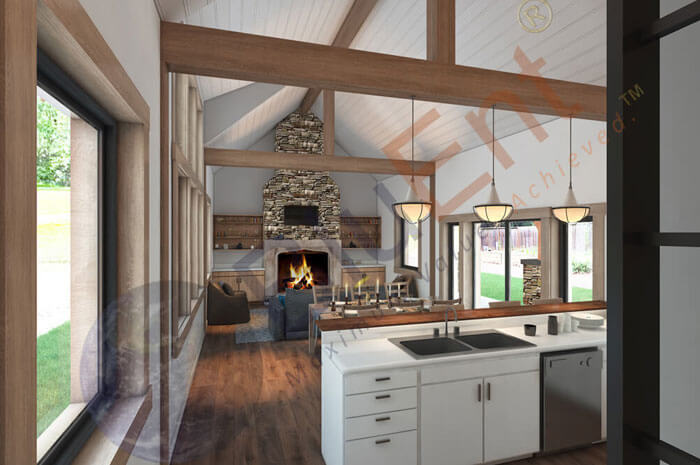
4. Wallpaper Finishes
Wallpaper can add a lot of character to any space, especially if you want to go quaint or old-fashioned.
- You can choose from paper, vinyl or even 3D photo wallpaper. Vinyl is suited to the kitchen, moisture-proof wallpaper to the bathroom, and washable and lightweight wallpaper to children’s rooms.
- A lot of higher-end wallpaper will be non-woven or paper, since other types often have a glossier finish. 100% paper wall coverings provide that classic, matte look that many people want.
- Paper wallpaper backing will always require glue, as it is unpasted.
- Non-woven wallpaper is another coveted option. It is a combination of natural fibers and vinyl and is more flexible, breathable, and durable than paper wallpaper.
- However, some non-woven wallpapers are made only from natural and/or synthetic plant fibers and contain no vinyl.
The options for wallpaper are endless – and it doesn’t help that, in the US, wallpaper was never standardized. That is, each factory manufactured wallpaper in its own way, with its own standard of measurement. This is why you see so many roll sizes, such as single, double and triple rolls.
Before you start on your project, you should know that some spaces, such as rooms with high humidity like kitchens and bathrooms, are generally not suited for wallpaper.
5. Hardwood Finishes
Hardwood provides a timeless look and elegance that has the potential to fit any style.
For a more traditional look, you may gravitate towards ash, mahogany, walnut or oak. For a contemporary look, consider sapele, maple or tigerwood. And if rustic is your choice, there’s cherry or hickory.
While hardwood is resistant to scratches and dents, it can have problems with moisture. To prevent hardwood from deteriorating prematurely, it requires a protective sealant. Every few years, regular sealing is needed.
Wood is a highly popular finish and material for architectural projects, so you may also be interested in knowing more about the types of wood molding and the best kinds of wood for furniture.
6. Carpet Finishes
Carpets are relatively easy to install and provide good insulation, which can help keep power costs down. They are a good way to add warmth to a room and are especially suited to colder climates. You can extent their life with steam cleaning and vacuuming, but they will need to be replaced about four or five times in a thirty-year timespan.
Trouble can pop up if there are untrained pets around, or you don’t take care of the pests that like to live in carpets, such as fleas and ticks. They can also cause problems for people with respiratory ailments, since it holds dust and various other allergens. And since they retain moisture, mold can grow.
Consider some of the types of carpet fibers for finishes:
- Wool: Considered premier carpeting. The only natural fiber made into carpets. Stain-resistant, durable and eco-friendly.
- Nylon: The most popular kind of carpet fiber. Holds up well against wear and is durable. However, it is not very stain-resistant, so some kinds include stain-resistant treatment.
- Olefin: Good for outdoors and basements, as it is resistant to mildew, mold and moisture. Not as comfortable to walk on as nylon, but tougher.
- Triexta: Similar in appearance to nylon, but much softer. Repels moisture and stains.
- Acrylic: Not widely available, but used as an inexpensive alternative to wool.
7. Tile Finishes
Tile is well suited to kitchens and bathrooms, whether they are in a home, hotel, or government building. This is because it is resistant to many issues such as moisture and temperature.
Some types of tiles you can choose from include ceramic, granite, porcelain, marble and glass. Each one has its own unique properties and will suit different spaces. For example, ceramic tiles are often used in bathrooms, kitchens and front entrances as they are durable and affordable. In contrast, glass tiles tend to be used as backsplashes or shower tiles, as they are stain resistant but prone to chipping.
To get a good idea of your options for tiles, read about the latest tile trends. For the best, most accurate results, you can use tile mockup designs or tile shop drawings.
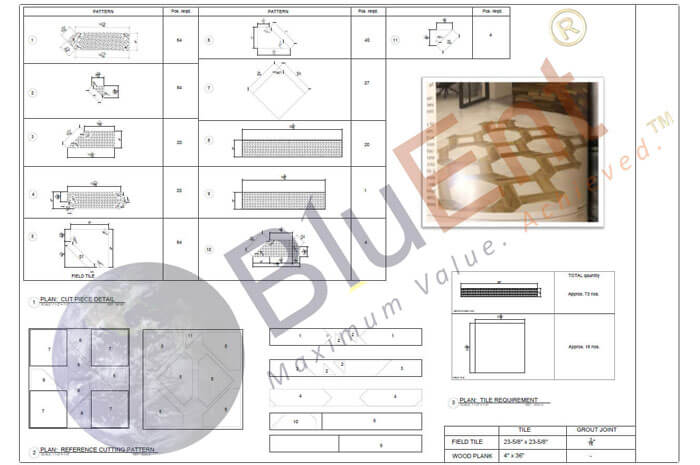
8. Vinyl Finishes
Do you want variety while also being cost-conscious? Vinyl is for you. It comes in a wide range of colors and patterns. Vinyl can retain its look for a long time as long as it is not in a high-traffic area, such as the kitchen or bathroom.
Vinyl is often used for flooring, and vinyl flooring refers to both luxury vinyl tiles (LVT) and vinyl roll flooring (also called vinyl sheet flooring).
LVT is designed to imitate natural flooring options such as ceramic tile, granite or hardwood. Roll flooring is fibreglass-cushion-backed, and comes in large, flexible sheets. Vinyl floors can last between 5 and 25 years, depending on quality, installation, and maintenance.
However, it is important to note that vinyl releases harmful gases and VOCs that contribute to issues with air quality. It can also rip with sharp objects and can be difficult to remove once glued down.
Furthermore, it cannot support high temperatures, and tends to discolor and fade with extended exposure to UV. For this reason, vinyl finishes are generally not used in spaces with a lot of direct sunlight, such as balconies.
If it is within your budget and available in your area, we would recommend going for one of the other finishes.
Conclusion
With the correct interior finishes, you can heighten the aesthetics of your space, extend the life of certain elements, improve brand visibility, increase resale value, and reduce energy costs. We hope this article has given you a good starting point.
Whatever your choice, product modeling and exterior and interior 3D rendering will help you finish your project successfully, attract investors, and wow clients. We serve homebuilders, real estate developers, interior designers, architectural companies, home renovators, design build contractors and remodelers. Browse our portfolio to see how we’ve helped businesses like yours!
Ready to make your project a success with 3D rendering services? Contact us now!
Maximum Value. Achieved.


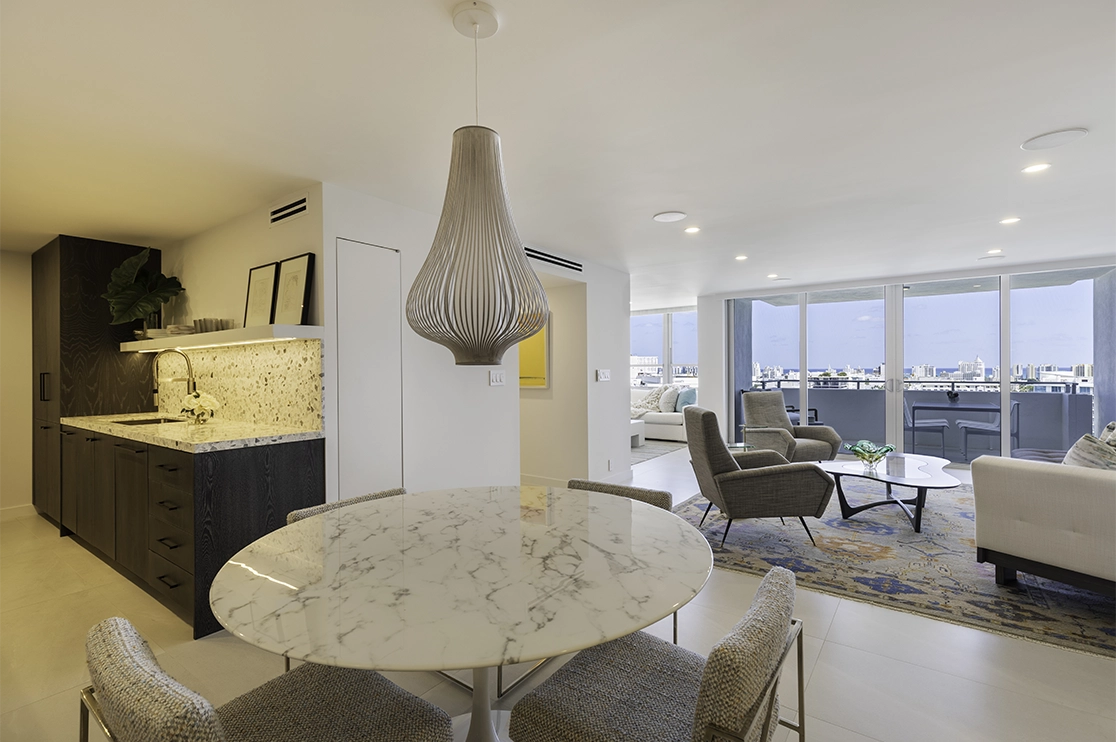




 Best 3D Custom Wardrobe Designs for Your Bedroom
Best 3D Custom Wardrobe Designs for Your Bedroom 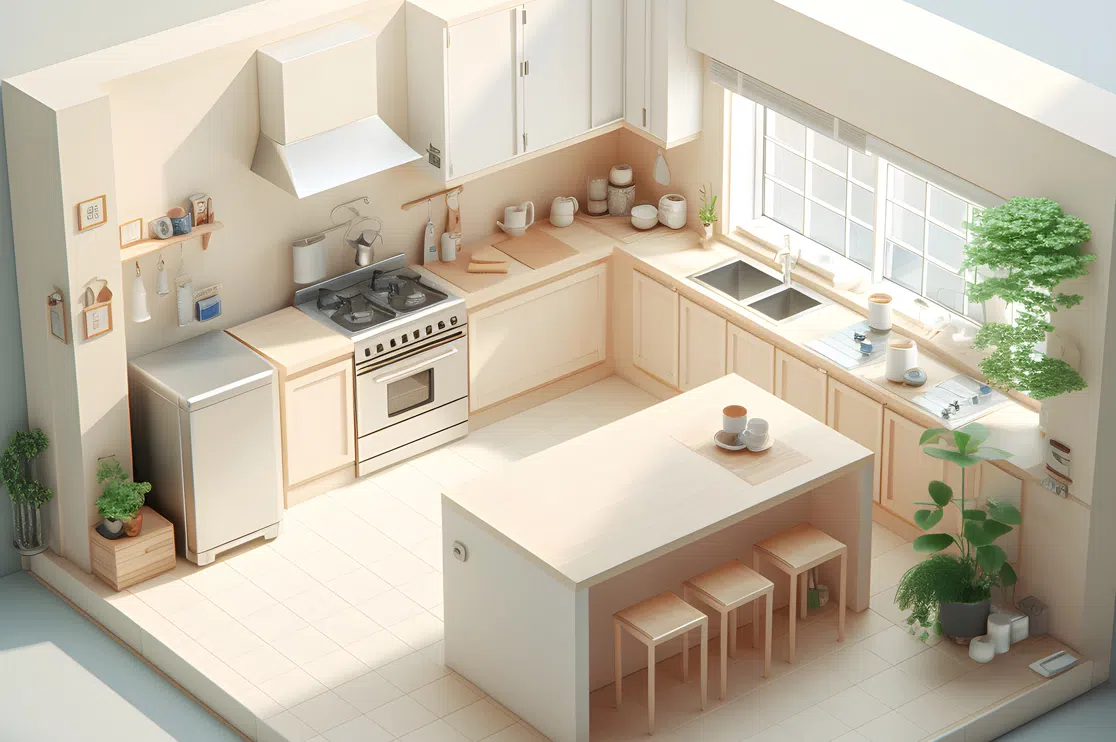 7 Stunning 3D Kitchen Design Ideas for a Perfect Remodel
7 Stunning 3D Kitchen Design Ideas for a Perfect Remodel 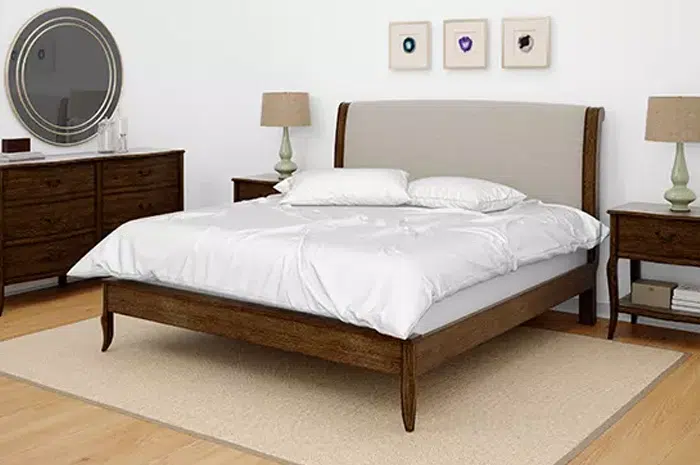 Shaker Style Furniture Trends and Key Elements Every Furniture Designer Should Know
Shaker Style Furniture Trends and Key Elements Every Furniture Designer Should Know 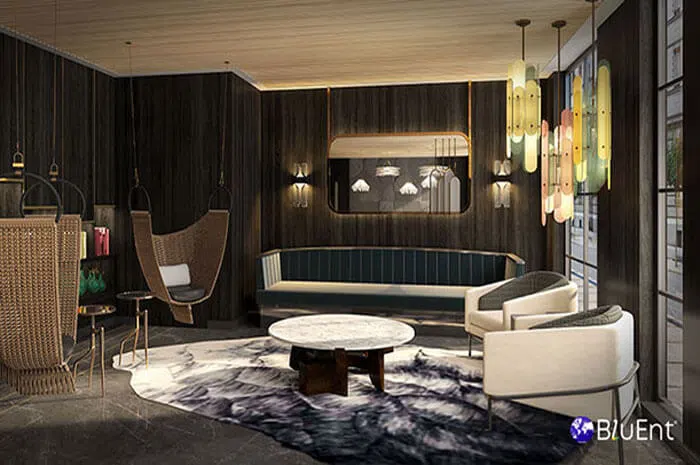 The Latest Furniture Trends for Furniture Design and Manufacturing Companies
The Latest Furniture Trends for Furniture Design and Manufacturing Companies